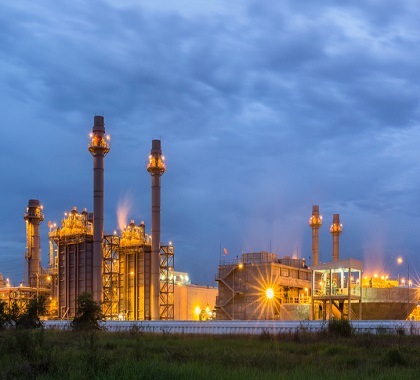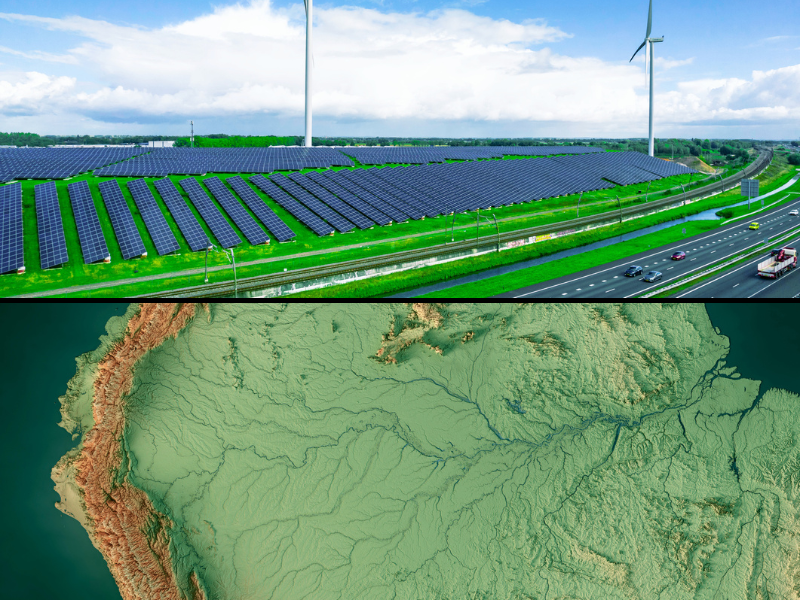In early October, Pennsylvania Gov. Tom Wolf issued an executive order directing the Department of Environmental Protection (DEP) to “develop and present … a proposed rulemaking package to abate, control, or limit carbon dioxide emissions from fossil-fuel-fired electric power generators.” Wolf also ordered DEP to develop a “carbon dioxide budget consistent in stringency to that established in the [Regional Greenhouse Gas Initiative] RGGI participating states.”
In his press release, Wolf stated “[r]educing CO2 emissions as part of combatting climate change is a top priority for the Wolf Administration.” Unfortunately, Wolf fails to understand there is scant research finding RGGI contributes to reducing CO2 emissions. Further, RGGI, like all cap-and-trade schemes, is as a regressive tax in the form of higher energy costs for the Keystone States’ most vulnerable residents.
RGGI, established in 2009, is an interstate cap-and-trade program made up of the New England states plus Delaware, Maryland, New Jersey, and New York. Cap-and-trade programs limit CO2 emissions by establishing a specific amount of gas that businesses may produce and allowing additional capacity to be bought from other organizations that have not used their full production allowance.
Although lawmakers use RGGI to reduce CO2 emissions, there is little evidence the program has achieved that goal. For example, a 2018 Cato Institute Working Paper found “no added reductions in CO2 emissions, or associated health benefits from the RGGI program.” Indeed, author David T. Stevenson of Delaware’s Caesar Rodney Institute concluded, “emission reductions are consistent with national trend changes caused by new EPA power plant regulations and lower natural gas prices. The comparison requires adjusting for increases in the amount of power imported by the RGGI states, reduced economic growth in RGGI states, and loss of energy intensive industries in the RGGI states from high electric rates.”
Speaking to the Commonwealth Foundation, Stevenson disputed recent RGGI claims. For example, RGGI is not responsible for a 47 percent decline in “CO2 emissions from RGGI powerplants,” rather the use of “natural gas as alternative energy was responsible for 70% of the reduction and [Environmental Protection Agency] EPA restrictions accounted for the rest.”
Stevenson also notes energy prices in RGGI states “increase 64%” faster and that “impacts from revenue generated by the sales of CO2 allowances are minimal at about 0.1% of [gross domestic product [GDP],” a direct face to the claim that GDP in “RGGI states has grown by 47%.”
Pennsylvania does not need to join RGGI to reduce carbon dioxide emissions. In fact, the Commonwealth has already reduced total CO2 emissions. According to a November 2018 report from the Pennsylvania Department of Environmental Protection, total statewide gross emissions (TSGE) have steadily declined from 2000 to 2015. The only year in which CO2 emissions increased was in 2013. In 2000, TSGE amounted to 324.79 million metric tons carbon dioxide equivalent (MMTCO2e). This decreased to 286.78 MMTCO2e in 2015.
Further, cap-and-trade programs are essentially regressive taxes and disproportionately impact lower-income residents. For example, the National Bureau of Economic Research finds cap-and-trade programs hit the poor the hardest, noting “households in the lowest fifth of the income distribution could shoulder a relative burden that is 1.4 to 4 times higher than that of households in the top fifth of the income distribution.” Stanford University found cap-and-trade programs and carbon dioxide taxes are regressive by nature “because polluting goods are mostly energy-intensive and take up a large percentage of a low-income person’s budget.”
Moreover, cap-and-trade programs disproportionately impact minorities. Energy Efficiency for All found African-Americans spend a higher percentage of their income on energy than whites and other groups. In other words, African-American households suffer under a “median energy burden 64 percent greater than white households.” African-Americans and Latinos also pay “more for utilities per square foot than the average household,” the study found.
Americans are already facing difficulties in meeting their energy needs. The U.S. Energy Information Administration found 31 percent of households experienced “a challenge in paying energy bills or sustaining adequate heating and cooling in their homes in 2015.” Further, one in five households “reported reducing or forgoing necessities such as food and medicine to pay an energy bill.”
The Industrial Energy Consumers of Pennsylvania (IECP) estimate the “minimal financial impact of RGGI on [Pennsylvania] is approximately … $275 million per year additional cost to electric generators.” IECP concluded the “impact to electricity prices and energy intensive manufacturing should be studied and fully understood before moving forward with RGGI.”
Lawmakers should be aware that this additional cost will trickle down to Pennsylvania’s most vulnerable residents, many of whom already receive financial assistance from the Commonwealth. In 2017, “low-income, payment-troubled customers” in Pennsylvania’s Low Income Home Energy Assistance Program “received almost half a billion dollars in financial and other assistance to help with their energy bills.”
Lastly, Pennsylvania’s booming hydraulic fracturing, or fracking, industry is a significant contributor to reduced CO2 emissions. In a 2016 Forbes article, Jude Clemente, principal at JTC Energy Research Associates, LLC, noted, “Pennsylvania’s natural gas boom has had the measurable benefit of lowering total CO2 emissions in the state’s power sector by about 30%.” Clemente notes this CO2 reduction “can almost entirely be attributed to natural gas displacing coal and petroleum.”
According to a 2019 WalletHub report, Pennsylvania already ranks 28th in the nation for energy costs. Joining RGGI would make energy costs in the Keystone State even higher. Further, data on RGGI do not indicate CO2 emissions have actually been reduced. Rather than forcing Pennsylvania into a regressive cap-and-trade scheme, lawmakers should determine how the Commonwealth can better utilize its booming fracking industry, which is known to have contributed significantly in reduced carbon dioxide emissions.
The following documents provide more on cap-and-trade programs and hydraulic fracturing.
A Review of the Regional Green Gas Initiative
https://object.cato.org/sites/cato.org/files/serials/files/cato-journal/2018/2/cato-journal-v38n1-chapter-11.pdf
This Cato Journal article authored by David T. Stevenson of the Caesar Rodney Institute finds the Regional Greenhouse Gas Initiative has not shown any added emissions reductions or associated health benefits, has had minimal impact on energy efficiency and low-income fuel assistance, and has increased regional electric bills.
Legislating Energy Poverty: A Case Study of How California’s and New York’s Climate Change Policies Are Increasing Energy Costs and Hurting the Economy
https://www.pacificresearch.org/wp-content/uploads/2018/12/LegislatingEnergy_F_Web.pdf
This analysis from Wayne Winegarden of the Pacific Research Institute shows the big government approach to fighting climate change taken by California and New York hits working class and minority communities the hardest. The paper reviews the impact of global warming policies adopted in California and New York, such as unrealistic renewable energy goals, strict low carbon fuel standards, and costly subsidies for buying higher-priced electric cars and installing solar panels. The report finds that, collectively, these expensive and burdensome policies are dramatically increasing the energy burdens of their respective state residents.
Less Carbon, Higher Prices: How California’s Climate Policies Affect Lower-Income Residents
https://heartland.org/publications-resources/publications/less-carbon-higher-prices-how-californias-climate-policies-affect-lower-income-residents
This study from Jonathan Lesser of the Manhattan Institute argues California’s clean power regulations, including the state’s renewable power mandate, is a regressive tax that harms impoverished Californians more than any other group.
Five Myths of Cap-and-Trade
https://heartland.org/publications-resources/publications/five-myths-of-cap-and-trade
Articles supporting cap-and-trade programs rest on a number of fallacies. In this article by Todd Myers of the Washington Policy Center, Myers identifies and explores five persistent myths concerning cap-and-trade, including the belief that a cap on carbon dioxide emissions guarantees emissions reduction.
The Value of U.S. Energy Innovation and Policies Supporting the Shale Revolution
https://www.whitehouse.gov/wp-content/uploads/2019/10/The-Value-of-U.S.-Energy-Innovation-and-Policies-Supporting-the-Shale-Revolution.pdf
This report from the White House Council of Economic Advisors estimates that increased oil and natural gas production due to the fracking revolution is saving American families a combined $203 billion annually, or around $2,500 per family. On top of this, the fracking revolution is benefitting the environment, lowering energy-related greenhouse gas emissions by 527 million metric tons between 2005 and 2017.
Debunking Four Persistent Myths about Hydraulic Fracturing
https://heartland.org/publications-resources/publications/debunking-four-persistent-myths-about-hydraulic-fracturing
This Heartland Institute Policy Brief by Policy Analyst Timothy Benson and former Heartland communications intern Linnea Lueken outlines the basic elements of the fracking process and then refutes the four most widespread fracking myths, providing lawmakers and the public with the research and data they need to make informed decisions about hydraulic fracturing.
The Local Economic and Welfare Consequences of Hydraulic Fracturing
https://heartland.org/publications-resources/publications/the-local-economic-and-welfare-consequences-of-hydraulic-fracturing
This comprehensive study published by the National Bureau of Economic Research says fracking brings, on average, $1,300 to $1,900 in annual benefits to local households, including a 7 percent increase in average income, a 10 percent increase in employment, and a 6 percent increase in housing prices.
Local Fiscal Effects of a Drilling Downturn: Local Government Impacts of Decreased Oil and Gas Activity in Five U.S. Shale Regions
http://www.rff.org/files/document/file/RFF%20Rpt-SPF.pdf
This study from Resources for the Future finds 82 percent of communities in the five largest shale regions in the United States experienced a net fiscal benefit from hydraulic fracturing despite a large drop in oil and natural gas commodity prices starting in 2014.
Impacts of the Natural Gas and Oil Industry on the U.S. Economy in 2015
https://heartland.org/publications-resources/publications/impacts-of-the-natural-gas-and-oil-industry-on-the-us-economy-in-2015
This study, conducted by PricewaterhouseCoopers and commissioned by the American Petroleum Institute, shows that the natural gas and oil industry supported 10.3 million U.S. jobs in 2015. According to the Bureau of Labor Statistics, the average wage paid by the natural gas and oil industry, excluding retail station jobs, was $101,181 in 2016, which is nearly 90 percent more than the national average. The study also shows the natural gas and oil industry has had widespread impacts in each of the 50 states.
Nothing in this Research & Commentary is intended to influence the passage of legislation, and it does not necessarily represent the views of The Heartland Institute. For further information on this subject, visit Environment & Climate News, The Heartland Institute’s website, and PolicyBot, Heartland’s free online research database.
The Heartland Institute can send an expert to your state to testify or brief your caucus; host an event in your state; or send you further information on a topic. Please don’t hesitate to contact us if we can be of assistance! If you have any questions or comments, contact Heartland’s Government Relations department, at [email protected] or 312/377-4000.




